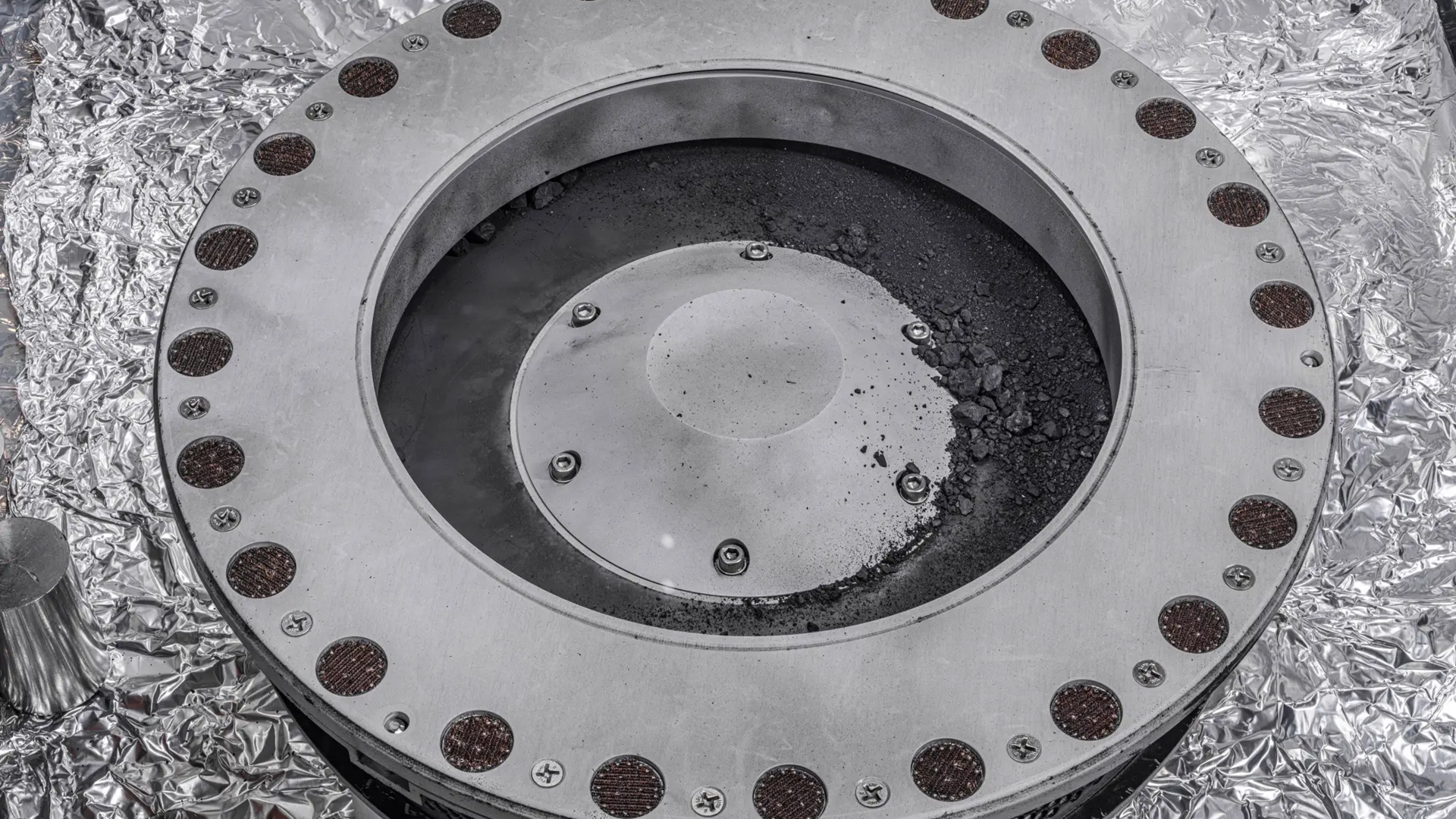- After a years long journey, NASA opened a canister containing a sample of the Bennu asteroid to find more material than it expected.
- Upon analysis, it was discovered that particles from the asteroid were rich in carbon and water.
- As much as 70 percent of the sample will be sent to scientists around the world for further study.
At the end of September, the OSIRIS-REx mission reached its conclusion when a module containing a sample of the asteroid Bennu arrived on Earth.
The aim of the mission was to collect 60 grams of material from the asteroid but ultimately a whole lot more was collected.
“When the science canister lid was first opened, scientists discovered bonus asteroid material covering the outside of the collector head, canister lid, and base. There was so much extra material it slowed down the careful process of collecting and containing the primary sample,” NASA wrote in a press release.
Since the canister was opened, scientists have performed an initial analysis of the material collecting images from a scanning electron microscope, infrared measurements, X-ray diffraction and chemical element analysis. The space agency says that X-ray computed tomography was also used to create a 3D model of one of the particles.
The agency says that the particle showed evidence of carbon and water in abundance.
“The bounty of carbon-rich material and the abundant presence of water-bearing clay minerals are just the tip of the cosmic iceberg. These discoveries, made possible through years of dedicated collaboration and cutting-edge science, propel us on a journey to understand not only our celestial neighborhood but also the potential for life’s beginnings. With each revelation from Bennu, we draw closer to unraveling the mysteries of our cosmic heritage,” principal investigator for the mission from University of Arizona, Tucson, Dante Lauretta said.
NASA went on to say that 70 percent of the sample will be reserved for research by 200 scientists worldwide including from the Japanese Aerospace Exploration Agency, the Canadian Space Agency and others. Samples will also be loaned out to the Smithsonian Institution, Space Center Houston and the University of Arizona.
The sample will be studied for decades as scientists try to piece together our origins and indeed the origins of the universe itself.
The spacecraft used to transport the sample of Bennu is currently en route to another asteroid known as Apophis under the mission banner of OSIRIS-APEX.
[Image – NASA/Erika Blumenfeld & Joseph Aebersold]

